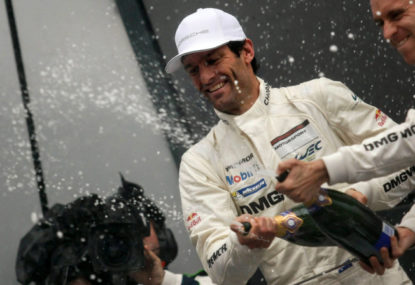The IndyCar Afterburn: The pitfalls and pinnacles of Long Beach 2024
The Long Beach Grand Prix is the Monaco of American motorsport, and this past weekend, the IndyCar Series reminded everyone exactly why. We witnessed…

There has been plenty said, scribbled and typed about the continuing growth of the World Endurance Championship, and the problems that Formula One is facing.
I’m happy to say that the racing in the WEC this year has far outstripped what we’ve seen on the Grand Prix circuit and the series itself is getting far more eyeballs both here (thanks to Mark Webber) and elsewhere around the world.
Here are five reasons why the World Endurance Championship is better than Formula One.
The racing
Anyone who tells me that the Formula One product is better than what the World Endurance Championship is putting out on any given racetrack on any given weekend is either closely related to Bernie Ecclestone or is just plain crazy.
Contrast what we saw over six thrilling hours at Silverstone last Sunday to the Formula One Grand Prix at China. The FIA’s rules package is spot-on at the moment. You could not have asked for much more! There were dozens of on-track passes for the lead in all four classes – even though LMP2 basically boiled down to a two-car, one-team shoot out – while the Grand Prix cars struggled to do any passing whatsoever.
It wasn’t even a fair contest in that regard. From a mostly-boring Grand Prix to one of the more exciting endurance races we’ve ever seen, which, hopefully, is a sign of great things to come in the WEC this year.
In Formula One at the moment, realistically there are two cars (or maybe three on a good day) who can win a race, and, as such, a 10. On Sunday at Silverstone, there was a battle royal between two Audis, two Porsches and two Toyota machines for the top spot on the podium, and the race wasn’t decided until the very end. You can’t complain about that!
Technology
John Hindaugh said it best at the beginning of the Silverstone race: the LMP1 class is home to the most technologically advanced race cars on the planet, and, key to such a large factory presence in LMP1 and GTE-PRO (far larger than we see in Formula One these days), is the fact that endurance racing is more of a proving ground for upcoming road car technology than Formula One.
These are cutting edge prototype machines that go ridiculously fast – faster than some of the times set by cars at last year’s British Formula One Grand Prix – despite weighing a considerable amount more than open-wheel vehicles.
The speed and grip the LMP1 cars have is, frankly, staggeringly awesome. To see the Audis power through high-speed corners, and to see the Porsche acceleration down the straights at Silverstone was awe-inspiring.
Fan engagement
You’re more likely to want to follow a driver and a series if you get to rub shoulders with them, right? At a Formula One Grand Prix, the teams keep to themselves and access to the paddock is highly controlled. The opposite is true for all World Endurance Championship events (other than Le Mans, due to space, or a lack thereof, in the paddock) and there are multiple driver appearances and autograph sessions. Having Patrick Dempsey in the field definitely helps.
Add to that, drivers like Aston Martin factory racer Fernando Rees, who busily and comprehensively interacts with fans on social media. It makes drivers seem less like robots hidden behind helmets and in fire suits, and more like regular human beings. The World Endurance Championship has worked hard at engaging the fans, and it seems to be paying dividends. The series’ social media presence has been strong for years, whereas Formula One seems to be just coming to that party.
The car count
Le Mans has 56 cars, and most World Endurance Championship races total thirty or more vehicles over four classes, making for a packed grid that’s also bright and diverse. Obviously, more cars makes for more sustained racing.
Compared to Formula One, there are less instances of cars getting strung out and racing on their own for so long, and the best drivers at the pointy end of the field not only need to be fast and focus on their LMP1 battle, but also must weave through traffic, and that’s no easy feat.
The drivers
Perhaps at the top end of driving talent, Formula One is ahead of the World Endurance Championship, but, overall, I’d prefer to watch the wealth of factory driver talent on offer in the WEC – the Anthony Davidsons, Marcel Fasslers and Patrick Longs of the racing world – over a lot of the Formula One backmarkers, who, essentially, are ride-buyers, in those seats to keep cars on the grid.
In recent years, the notion that sports car racing is a place for guys who have been to Formula One and were looking for a place to spend the fading years of their career has been dispelled. These days, a lot of young talent is being snapped up by the best sports car squads in the world. Marcel Fassler, Romain Dumas, Timo Bernhard are good examples of this phenomenon, and we are seeing others like Brendon Hartley, the rising New Zealander, coming through the ranks, and not heading to Formula One.
These days, with Formula One rides that you actually get paid for and aren’t required to bring a budget scarce, a lot of brilliant talent is finding it’s way to top-level sports car racing, and it’s no surprise that the racing product in the WEC has risen at the same time.